
The 68th annual Conference on World Affairs hits Boulder on April 4 and runs through April 8. Yes, that Conference on World Affairs, the one that’s been embroiled in controversy for the past couple of years over who should control the event.
But here’s the deal. Despite the ongoing squabbling, there are still hundreds of local volunteers giving their time and energy to make this year’s conference another wild success. The people of Boulder are once again opening their homes to panelists and providing them rides to and from the airport. And best of all, a whole bunch of really smart and creative people from all across the country are once again descending on the University of Colorado Boulder to participate on panels, where amazing and important subjects will be discussed for free and everyone is welcome. And as has always been the tradition, panelists will be taking questions from students of all ages and any members of the community who feel the urge to be enlightened.
In short, CWA remains one of the year’s most important opportunities for Boulder County residents. So don’t miss the year’s best discussions of politics, arts, life, the environment and so much more over something like, well, politics.
As is the tradition at BW, we have chosen a few of the panels that you’ll have the chance to see next week and are previewing them just to whet your appetite. If these examples are any indication, it’s going to be a great year for Conference on World Affairs.
Not Your Mother’s Feminism
4 p.m. Thursday, April 7, UMC 235
In her early 20s, journalist Bonnie Burton was heavy into the ’90s punk music scene. But concerts were a hassle — as men gravitated toward the front, women were pushed to the back.
“Unless you knew how to throw a punch, you wouldn’t be able to get up front at some of these shows that were more hardcore punk bands,” Burton says.

When the Riot Grrrl movement came along, Burton finally found a musical haven, which sparked a lifelong flame for justice.
“[The bands] would say, ‘Girls to the front!’ … And that was the first kind of inkling for me to say, ‘Oh yeah, we deserve to see the concert as much as anybody else,” she says. “It put that seed in my mind of, ‘We deserve this too,’ which to me is what feminism is all about.”
Twenty years later, Burton is still outspoken about feminism and the need for gender equality in her work. Burton will be a part of the Not Your Mother’s Feminism panel at CWA, along with Vivian Nixon, Vivian Onano and Kathleen Adams.
Feminism has seen many iterations over the past century, from the Suffragettes who secured voting rights to the second wave who fought for broader issues including reproductive rights and equality in the workplace. Since then, the meaning has changed and gone through growing pains to fulfill modern-day needs. But at its core, it’s a multifaceted issue that calls for people to stand up for equality and global change to improve the faculties of women everywhere.
“That’s why feminism keeps changing; it needs to suit the time that it’s in,” Burton says.
Today’s feminism sees the conversation growing wider and deeper. Activist and entrepreneur Kathleen Adams says that with the use of technology, more people have access to myriad platforms to use for change, like the Hollaback!, which Adams was a founding board member for. Hollaback! is a nonprofit organization that uses cell phones to end street harassment by letting women note locations of where they were bothered and even snap a picture of the offender — reclaiming the control of the situation and fighting back.
Technology is also integral in helping women share their diverse experiences. Intersectional feminism showcases the many, many perspectives and issues that women face today.

“With the expansion of human rights and people recognizing different statuses in gender identities, [feminism] is becoming more national in terms of conversation,” Adams says. “It’s no longer a white woman’s liberal agenda. It’s a movement that captures the voices of all. Whether it be with trans rights or gay rights or Black Lives Matter, [feminism] has to capture the voices of the group that it represents.”
Also on the panel is Vivian Onano. Born and raised in Kenya, Onano is a women’s and girls’ rights advocate and a youth advisor to the U.N. Women Global Civil Society Advisory Group. And she brings a global perspective to the topic of today’s women’s rights and intersectionality.
“I think it’s those different experiences that makes the conversation very rich,” Onano says. “We realize that maybe the issues that you’re grappling with in the U.S. are different than the issues we’re grappling with in Kenya and South Africa and are different than the issues with the Pakistani or Iraqi women are grappling with. But the fact that all these stories come together and merge together brings a different concept and perspective in addressing feminism and also gender equality.”
Onano’s platform is that through education, we can achieve gender equality.
“For me, education has really empowered me, education has given me a voice. … It’s every child’s right to access education,” she says. “Why would you only want to give it to one gender and not the other? I don’t think there’s any time that I’ve been asked why it’s important to educate a boy child, but everywhere I go I’m asked, ‘Why is it important to educate a girl child?’ Why do you have to justify girls going to school? It’s a basic human right.”

While progress has been made, there’s still a long way to go to even the playing field for both genders. But each panelist has high hopes for the future.
“I would like it to be where feminism is no longer a hot button issue. I want equality to be for all,” Adams says. “It would be great where we don’t have to talk about women’s rights, we just talk about human rights, but obviously we can’t … until women are liberated and empowered.”
Until then, feminism will be there to knock down remaining barriers.
“Sometimes doors are closed to women, and that’s crap,” Burton says. “There should be just as many female directors, female showrunners. There should be just as many women writing major comics for Marvel and DC as there are men, and that’s just not the case today. It’s sad, because you think in this day and age we’d be paid the same for the same job and be hired as much as men for certain jobs, and that we’d be respected as much. That’s why feminism is so important to keep thriving and to keep the next generation fighting for it because until these problems are solved, feminism needs to exist.”
Onano says feminism starts with the person; each of us has a responsibility to help the problem. “There’s work that has to be done, and if I don’t do it, who do I expect to do it? It has to start with me.”
In the future she hopes for more. “Definitely more women leaders … women being respected in different leadership positions, and young girls having access to education, despite social class or family background. [I want] for women to be in power, develop a voice of their own, be confident, and actively participate in the socioeconomic communities and countries.
“I know it’s a big vision and big goal,” she says with a laugh. “But I think it’s achievable if everybody has a small part. We all have a small part to do.”
Millennial Culture is an Oxymoron
3:30 p.m. Thursday, April 7, Old Main Chapel
Millennials are maligned. Attached to them by older generations are the undesirable qualities of self-centeredness, short attention spans, feelings of entitlement and a lack of social skills. But do millennials contribute and advance art and culture? And are those accusations just the latest in the long-running tradition of “kids these days” frustration levied by generations past?
These are the questions that will face the aptly named Millennial Culture is an Oxymoron panel on April 7.
Millennial is the name for the generation of people born roughly between 1980 and 2000. Millennials are the first generation to grow up in the so-called digital age, and many received their first cell phones, email addresses and computers around puberty. This familiarity with technology has characterized millennials, and shaped the way they view the world — and how Generation X, baby boomer and silent generation predecessors view them.
“It was 1960, and I was training in England,” says panel moderator Christopher Sarson, a long-time child psychologist and television producer. “One of the rules that editors told you you had to do was to put a picture on the screen for at least three seconds so that people could absorb it. Look at the way that has changed, look at the montages and impressions of these hundreds of pictures in 60 seconds, which give you the impression of something instead of the detail.”
That there is only an impression of substance and originality is the argument against millennial popular culture, which consists of things like selfies, photo filters, clickbait websites like Buzzfeed, Snapchat, nostalgic TV and movie remakes, and more.
But those arguments are only half-true because every generation has levels of originality and creation, says panelist and photographer Alexandra Huddleston. Take photography, for instance. With phones equipped with high-quality lenses and editing software, amateurs can take decent-looking shots, but that will never replace the cultural need or desire for higher-quality photography, Huddleston says.
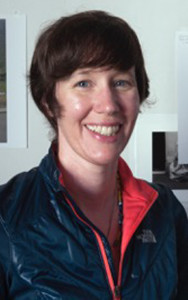
“The bar over time has gotten lower and lower and lower. It’s like writing,” she says. “If you’re writing text messages to your friends, sure, you’re a writer. And you accept the quality that your friends write the same as with pictures they take. But there are different levels, and some people can appreciate those levels.”
With a new ubiquity of venues to share art, gatekeepers like record companies, publishing houses and newspapers have become sparse. That means, for every opportunity for good art to be consumed, there’s an equal opportunity for bad art.
“I do think we’ve gone through a period where sometimes people who are obsessed with the technology itself have lost sight of the importance of editors, of curators,” Huddleston says. “So you do have that issue, but that doesn’t mean that there isn’t a place that you can go to to get quality.”
The only millennial on the panel, Max Nanis, works in the cracks between current popular culture, both online and in reality. As a conceptual artist, programmer and computational biologist, Nanis uses current technology to create beneficial and unique art and programs. For instance, Nanis created a book of poetry out of responses to questions about life from users of Amazon’s Mechanical Turk marketplace, a place where anyone can take a basic data entry job for mere cents per project. Or, there’s the program that changes YouTube view counts in your browser to the number of human lives it would take to watch that video that many times. Plus there’s the “biology-based” card game that tries to use data gathered from numerous users to determine predictive patterns for breast cancer.

“No millennial had a choice to be a millennial. They didn’t know any other medium or any other way to create art,” Nanis says, adding that if he were born 100 years ago, it’s not like he would be unproductive. “I would find some way to convert my contemporary interests into the available media at the time.”
There seems to be an agreement among the panel that the issue is not with millennials per se; the issue is perhaps with everyone adjusting to technological advances. So why is there a stigma about millennials and about the culture they are creating?
“There’s always been a lot of repurposing of content and form. No one has any ability to create a novel thought. To assume the baby boomers were apparently more creative or original is total rubbish,” Nanis says. “People romanticize their own struggle. They have the sense that their child has it easier than them.”
Nanis adds that that generational blame goes both ways, saying that “anybody that gets mad at previous generations is selfish” because “if you have a millennial complain that a previous generation gets a job more easily or whatever, I would say, ‘One: You are younger. Pull an all-nighter, and get shit done, and take that person’s job. Two: Remind yourself they are old and cannot work as hard as you. Put more into it if you want more out of it.’ I want to die knowing that was my work ethic.”
Huddleston, a self-proclaimed member of an in-between generation, says she wonders why there’s a need to label millennials at all since everyone contributing to culture today is dealing with technology and the new opportunities and problems it presents.
“We live in an incredibly capitalistic society, so one of the things that goes on with this type of label is that people who like to create markets are creating markets by defining people in such a way,” she says.
But that doesn’t mean that there aren’t unique characteristics about millennials to market to — or hail/complain about. Panelist and author Ty Tashiro recently wrote about dating patterns among millennials, an exercise that revealed beneficial qualities of the generation.
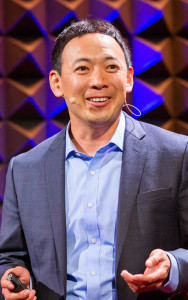
“Millennials seem to be committed to think about quality friendships and quality connections,” Tashiro, who has a Ph.D. in psychology, says. “They seem to be committed to, ‘How can we do this marriage thing better?’ Some people see it as being skittish or noncommittal, but the better take is that they’re being thoughtful.”
When asked to speculate, Tashiro says the lasting legacy of the millenials might be that they’re invested in the truth over all.
“They just got so much marketing and so much BS from big institutions that reached its peak right before the financial crash,” Tashiro says. “I think there was a lot of growth out of that, and I think that was millennial-driven. … I think some of the criticisms leveled at millennials — that they’re complainers and that they shift jobs a lot — I don’t see it as driven by a lack of work ethic or a lack of caring or thoughtfulness, I think it’s the opposite, but I think they just have to thrash around.”
Sarson, the moderator, says he won’t speculate on the future creations of millenials, but that Donald Trump is an outpouring of the impressions, and not substance, created by the technology age. Nanis shares a lack of interest in speculating legacy, but puts it a little more bluntly.
“That’s a historian’s job,” he says. “I would never waste my life to take a snapshot and to relish this time of my life.”
The Myth of the Rational Voter
1 p.m. Friday, April 8, Macky Auditorium
Americans’ record on civic engagement has slowly declined as voter turnout has hovered just at or below 50 percent, with few exceptions, since the 1960s. In the 2014 midterm elections, only 34.6 percent of eligible voters showed up at the polls, the lowest turnout since World War II. But midterm elections always draw a smaller crowd and presidential election years tend to see larger numbers, with 2008 boasting the largest turnout, both in the primaries and general election, in over 40 years.
This election year is turning out to be record setting as well. According to the Pew Research Center, the Republican presidential primary has already drawn over 17 percent of eligible voters, with more than a dozen states yet to weigh in. This is up from an 11.6 percent previous high in 1980.
In this environment, both Donald Trump and Bernie Sanders, at first considered fringe candidates, have only increased in popularity, much to the dismay of the establishment in their own parties. And this brings into question the thought processes, perceptions and motivations of the average voter — their rationality if you will.
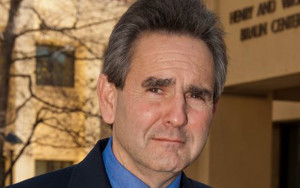
“In this election cycle, you could say, and you see it on both sides of the spectrum, that there is a high degree of anger,” says Robert Kaufman, a participant in this year’s CWA, a professor of public policy at Pepperdine University and professed neo-conservative who has written extensively about foreign policy in the Bush and Obama administrations. “Is it rational to be angry? Perhaps. Is it rational to manifest your anger in the way it’s been manifested? Not necessarily. … We’ve had angry periods in American politics; what’s different about this is the more untethered nature of the anger.”
Daniel Stid, a CWA participant who works at the William and Flora Hewlett Foundation, has also taken notice of the overall voter sentiment this year, calling it “frustration” rather than anger. He is the director of the Madison Initiative, which supports deliberation, negotiation and compromise in Congress, as will as the communication between members of Congress and the people they represent.
“A lot of people are deeply unhappy and frustrated with how the system is working and to the extent that both political parties are reflecting their priorities,” he says.
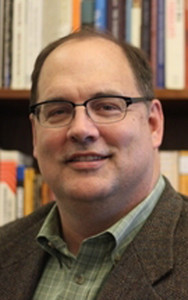
For Stid, this problem stems from two central issues: a decline in both American civics education and the media’s coverage of Congress.
“There’s a tension in our understanding of democracy in that we want to believe and think as citizens of a democratic country that we have the wherewithal and ability to understand the issues and develop a firm view on what should be done about them, identify the candidates that reflect that point of view and then vote for them,” Stid says. “But there’s problems with that although they are reasonable assumptions.”
This shouldn’t cast doubt on the American democratic process, however.
“We are not called upon as individual voters to decide what we should do in a given instance, but because we have a representative democracy we are called upon to choose people to decide on our behalf,” Stid says. “Just because we don’t have a universal dispassionate grasp on the issues doesn’t mean that we as voters can’t choose the people who are making these laws and choose who over time should be holding power.”
In terms of access to information, Stid doesn’t so much blame the voter for this lack of knowledge but rather larger players such the corporately controlled media. He also points to the declining media coverage of Congress, as larger newspapers in many states no longer have reporters in Washington.
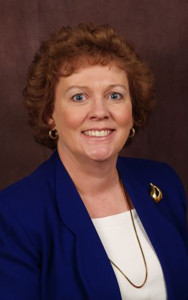
Panelist Mary G. Wilson, past national president of the League of Women Voters, also attributes the increased polarization of voters to a lack of information. “Part of the problem in the last maybe 20 years is that voters are bombarded with these little snippets of information through candidate advertisements or through the media and they don’t necessarily get the full picture,” she says. “And so they respond, and they rationally vote in accordance with their perception [which] is based on the information that has been presented to them. … I come to the conclusion that voters are acting rationally. They just may not be voting the way that they would if they had all the information that would be good to have.”
But Kaufman disagrees with this theory. “It’s very dangerous to be patronizing and say if somebody disagrees with you the information is flawed,” he says. “There’s plenty of information out there, we have more information now than we’ve ever had before. … It’s the recipient of the information, not the lack of information itself.”
Panelist Jeffrey Smith, for one, has spent 20 years researching the available information for himself. As an anti-GMO advocate, he is the founding director of the Institute for Responsible Technology, which has become a major source for consumers, policy makers and health professionals about the risks associated with GMOs.
Based on his research, Smith believes the biotech industry uses powerful lobbying and financial contributions “to skew perceptions and choices,” creating misinformation campaigns that target specifically members of Congress but also trickle down to the individual voter. And he believes this creates a culture of shame that manipulates citizens who may disagree with corporate interests.

“There’s a lot of disempowerment that’s associated with the corporate disinformation programs,” Smith says. “They are saying, ‘Don’t pay attention to your own opinions, don’t pay attention to your intuition, don’t pay attention to others. Ignore others and listen to us.’ And that [shaming] mechanism is the foundation of why some of these campaigns are so effective. … It’s using human nature in a way that’s counterproductive.”
Regardless, Smith sees a growing force of empowerment coming from activists, nonprofits and other groups that let people know they don’t have to be ashamed of differing opinions, and it’s manifesting itself in the marketplace. “There’s a sense in the U.S. that real change happens in politics, and I think so often politics follows real change,” Smith concludes.
If recent voter turnout is any indication, perhaps political change is coming. While some are concerned about who is voting and how they are voting, Wilson, for one, would just be happy to see more people vote.
“Whether they vote rationally or irrationally,” she says, “you’d wish they’d vote.”
Terrorism and the Role of the Media
9 a.m. Wednesday, April 6, Macky Auditorium
Within hours of the attacks in Brussels on March 22, Republican presidential front-runner Donald Trump told NBC’s Savannah Guthrie and Matt Lauer that if he were president he would torture terrorist suspects.
“Frankly, the waterboarding, if it was up to me, and if we changed the laws or had the laws, waterboarding would be fine,’’ Trump told NBC via phone. “If they could expand the laws, I would do a lot more than waterboarding. You have to get the information from these people.”
Then Guthrie chimed in.
“If you talk to experts who do these interrogations, you often find a division,” she said. “Some people think that kind of harsh interrogation technique works and will deliver you the information and others say it doesn’t work, you will get false information. Are you in the camp that harsh interrogation — let’s use the word: torture — works in a case like this?”
“Yes, I am. I am in that camp,” Trump responded. “I don’t believe the other people. I am in that camp. Absolutely.”
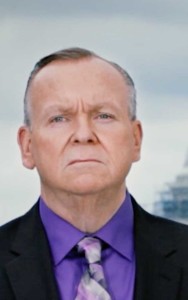
Mark Fallon, an expert on terrorism and international security matters, says the NBC reporters dropped the ball in response to Trump’s “totally irresponsible” comments on torture.
“[Trump’s statements] are dangerous; they could damage our national security and harm our troops. I really feel the media needs to challenge [comments like] that,” Fallon says. “An informed media ought to know how ineffective the policies of the past have been. How the [enhanced interrogation techniques] program was a disaster. What I find, often times, is the media doesn’t do the research. They haven’t read the Senate Select Committee on Intelligence torture report, the executive summary that concludes that [torture doesn’t work]. They aren’t well informed on the Senate Armed Services Committee on detainee abuse of the past. So they recycle and repeat what candidates say or what people who are not authorities on this say.”
Fallon’s entire career has revolved around understanding insider threats and violent extremism; after 9/11, Fallon worked with the Department of Defense to investigate terrorist trials and assess risks associated with releasing or transferring detained terrorist suspects.
On Wednesday, April 6, Fallon will join three other panelists for a discussion on terrorism and the role of media.
Among those panelists will be independent journalist and social media researcher Anna Therese Day.
Like Fallon, Day agrees that journalists have a responsibility to, as CNN political analyist John Avlon put it, “call BS” on false and racist rhetoric from political candidates.
“Trump and ISIS have something in common: They have managed to set the agenda for the American news cycle instead of newsmakers and journalists making informed editorial decisions about the needs of the American public and priorities and truth, which is what is so frustrating about coverage of Trump,” she says. “We don’t see enough context from journalists. They’re not bringing in voices that prove [his statements] to be racist and inaccurate. Everyone makes Trump out to be a joke, but prove it from a journalistic point of view.”
Day has spent time on the ground in Bahrain, Egypt, Israel, Jordan, Lebanon, Libya, the Palestinian territories, Syria, South Sudan and Turkey — just to name a few places — focusing on American foreign policy, women’s issues and youth organizing. In the summer of 2013, Day was one of the first American journalists to develop close source relationships with ISIS fighters, dining with them, learning about their families. At the time, the Western world knew next to nothing about this sect of fighters that had been rejected by al-Qaeda for being too violent.
Also at the time, the group still depended on traditional media outlets for exposure.
But social media has changed that.
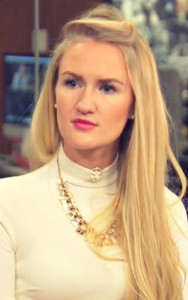
“I’m a journalist who started in the Arab Spring, and I saw social media used arguably for good, to topple dictators, to empower youth movements, to empower women previously not allowed in political organizing spaces outside the domestic sphere,” Day says. “But then I also witnessed a region transform dramatically in just a few shorts years when we saw this tool turned against people, turned against minorities and turned against my colleagues, journalists, with the rise of ISIS. I’ve had a front row seat for that. I think that’s been the most powerful juxtaposition in this issue for me, how [social media] can inspire the best and empower communities and also empower the worst.”
But traditional media too, in Day’s view, is playing a role in “empowering the worst.” By merely extending a platform to a candidate like Trump to express undeniably racist and inaccurate views — this is a man who condones torture, advocates building a wall at the U.S.-Mexico border, and supports a “shutdown” of Muslims entering the U.S. — Day says the American media is failing.
“I think we have a very distorted view of terrorism in the U.S.,” she says. “This hyperbole in the media and elections is not only incensing but also inaccurate and leading to a frightening culture for Muslim Americans.”
Fallon echoes Day’s sentiments.
“For me, an informed media is the best weapon in a democratic society, those who know the facts and are wiling to challenge someone when they say things like that.”
Also joining Fallon and Day on the panel is Heather Hurlburt, director of New Models of Policy Change at New America, and Oliver Morton, briefings editor at The Economist.














